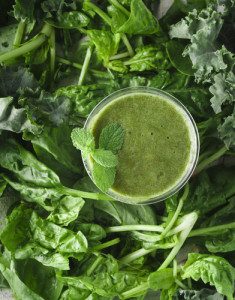As seen on The Hunt Country Scout Guide blog…
 Whenever I hear someone call a person a “go-getter,”I know the words are meant to show admiration for a person’s ambition and energy. In this country, we show off our busy lives like a badge, telling anyone who will listen how busy we are. This outlook probably evolved because we value hard work, and we want to be seen as tireless go-getters who do everything we can for our families.
Whenever I hear someone call a person a “go-getter,”I know the words are meant to show admiration for a person’s ambition and energy. In this country, we show off our busy lives like a badge, telling anyone who will listen how busy we are. This outlook probably evolved because we value hard work, and we want to be seen as tireless go-getters who do everything we can for our families.
One day I really started to examine the way of life of a go-getter. I started to consider what this term actually means.
If you really think about it, the go in “go-getter” is a directionless word, absent a destination. In life, we’re all about the go, go, go, spinning in circles but not always making measurable progress toward an objective.
Imagine how your life would change if you knew exactly where you were going. If we all took a moment to establish a few specific goals each day, week, month, or year, and went after them with purpose, our lives might feel more rewarding and less chaotic.
Take a look at these short-term goals and think about which ones you’d like to see happen in your life more often:
– Spend 2 hours more each week with my family members
– Prepare a meal at home tonight and sit down as a family to enjoy it
– Mindfully relax for at least 10 minutes each day
– Pack my lunch a few times this week instead of going out to lunch
– Enjoy a date night with my spouse
– Commit to 3 days per week of exercise
– Replace soda with more nutritious drinks
– Explore another form of exercise and discover something I might really enjoy
– Complete a project at work that I’ve been procrastinating over
Now that we’re in January, consider all the fresh opportunities to set new and long-term goals for the year. Our lives can certainly stay busy, but we can feel better about how our hours and days are spent when there are tangible priorities and goals on the horizon.
Instead of go, go, go-ing into each new day, steer towards something that’s important to you and to your family. Be a goal-getter! Your accomplishments will amaze you.
INTERESTED IN A MEMBERSHIP OTAC?

Recently, out of sheer curiosity, I joined the trend to ‘drink’ my veggies. I wanted to find out if I could blend kale, broccoli, Swiss chard, spinach or avocados and ease into the green with a sensational and delicious drink that even the most resistant green-eater might like (I’m looking at my husband).
After numerous attempts, my Vitamix and I finally came up with a drink that I love – AND that my husband will drink every morning!
Before I share my new green routine, I want to address a couple of points if you’re new to embracing veggies in this form:
1) To do this right, you need a good blender! I finally decided to bite the bullet and bought a Vitamix. It is an investment worth making – I use it for everything from shakes to soups to sorbets, and it delivers an absolutely flawless consistency every time.
2) Ease your family into this by using more fruit in your shake. Up to 60% fruit is fine in the beginning, and it adds a delectable sweetness and consistency that is still very healthy.
3) When integrating veggies into your smoothies, always use citrus to balance out the bitterness that certain greens (like kale) tend to have.
4) Follow my recipe to the letter if you are just easing into the green. It tastes delicious and fruity and offers plenty of quality nutrient density.
So here it is, in this order:
– 4 oz of pure pineapple juice (100% juice)
– 4 oz water
– 10 red seedless grapes
– 1/2 just-ripe sweet green pear or 1/2 sweet apple (like Honeycrisp or Gala)
– 1/2 ripened avocado
– optional, 1 scoop of vanilla protein powder
– 4 broccoli florets
– 2 large leaves or 4 small leaves of kale (Swiss chard or spinach work great, too!)
1 cup of ice
Blend the ingredients at a very high speed until smooth. Swallow your vitamins and nutrients in the form of whole foods blended into a sweet and scrumptious shake.
The holidays can be a very busy time for everyone, and eating nutrient-dense foods can sometimes be a mighty challenge. To keep your body’s health in check, create smoothies that include healthy greens, healthy fats and proteins. This wonderful habit will help you and your family stay on track all year long, and it’ll keep you looking and feeling your best! Enjoy!
The holidays often leave us with wonderful memories…and a few extra pounds.
Here are some fitness tips to help you kick off a healthy new year that can easily be incorporated into your daily routine–without breaking the budget.
Start a journal of foods and exercise. You’ll be surprised what you eat!
Get support from family and friends for your healthy lifestyle efforts.
Walk for 30 minutes a day at a good speed.
Spend time physically playing with the kids, grandchildren or your dog.
Run up and down steps a few times a day.
Get your heart rate up.
Park and walk. Find a parking space as far away as possible and walk.
Eat smaller portions (think salad plate) instead of filling a dinner plate.
Cut down on sodas, lattes, sugar. Don’t buy these items for your home.
Eat and drink slowly and in moderation.
Bring your own healthy lunch to work each day.
Fill up on salad and veggies.
Drink water before dining out.
Start a meal with a non-creamy soup such as a bouillon or broth.
If you’re traveling, take along healthy snacks you’ve already prepared.
Work out at with a friend; a work-out buddy can be a great inspiration.
Now you’re now on the road to a healthy new lifestyle and truly happy new year!
How many times have you jumped into an exercise or weight loss program full-steam ahead only to find within a few weeks you are burned out, discouraged and sometimes even a few pounds heavier than before you began?
You are not alone.
Popular culture has brought us up to believe there are quick-fix secrets to getting in shape and “having the life and body you have always wanted.”
The truth: there are no permanent quick-fix secrets. Healthy living is a lifelong journey- not a 5, 10 or 100 pound weight loss destination.
Getting in shape for life requires planning, setting realistic goals and expectations and taking it one day at a time, one step at a time.
So let’s focus on the journey!
First, take a little time to sit down and answer the following questions thoughtfully and honestly:
Are you physically ready to begin exercising? Have you spoken to your doctor?
Envision how your life would be different one year from now if you were to become physically active. Where would you be? How would you feel? What would you look like?
Why do you want a healthier and more active lifestyle? For change to be successful, it has to be aligned with your core values. Be honest here. Why is this change important to you? What is your primary reason for becoming more physically active?
How will you personally benefit from becoming physically active? How will your family benefit from this change? List at least four benefits to help you stay focused.
What obstacles and challenges will you face when beginning your fitness program? How will you overcome them? Be specific.
What people, resources and systems can you rely on for support? Make a list of the types of physical activities you enjoy or can envision yourself trying.
Next, don’t hesitate – get started today! Click here (.pdf) to download a free six-week fitness planner.
Commit to making the small suggested changes each week as part of your personal wellness plan.
You will soon find fitness becoming a regular, pleasurable and gratifying part of your life; and you will be amazed at how great you will feel.
Anyone who has spent an afternoon outside in the heat of a Virginia summer can attest to the importance of hydration.
Remaining hydrated (having enough water in your body to maintain crucial functions) is beneficial when trying to lose weight. It is also particularly important for athletes, regular exercisers and individuals who participate in summer outdoor activities where the body loses electrolytes through perspiration.
Electrolytes are electrically charged particles that help the body function normally. Some of the more familiar electrolytes include calcium, magnesium, sodium and potassium. Calcium and magnesium help muscles contract and relax. Sodium and potassium help water stay in the right balance inside and outside of cells. Sodium is the electrolyte lost in the highest concentration in sweat.
A few of the symptoms of dehydration are headaches, hunger pangs, and/or fatigue. Dehydration sometimes is mistaken for hunger, so make sure you drink 8 oz of water, and wait 10 minutes before consuming additional calories. Often the symptoms will subside, which indicates you just needed to hydrate yourself. However, if after 10 minutes the hunger pangs are still there, enjoy a healthy snack.
Many of us overuse sports drinks, flavored beverages and sodas that contain a lot of wasted sugar and calories. In fact, some of the most popular sports drinks have as much sugar as a regular soda! (Did you know that 11% of the total calories consumed in the United States come from soda beverages? This alarming statistic helps us understand how these empty calories have a direct impact on our obesity epidemic.)
As a general rule, sports drinks become beneficial only after 90 minutes of high-intensity exercise. Up to that point, water is the perfect hydration choice. Some people tell me they don’t like water. If this is the case, dilute your sports drink with water and create a 50/50 mix. You will still get the flavor you like, with half the calories and sugar.
Doctors recommend adults consume eight 8-ounce glasses of fluids per day. Active adults should add two or three additional eight 8-ounce glasses of fluids per hour of exercise. These fluids should be water or come from water-rich whole foods, which are the best choices for keeping the body hydrated and maintaining electrolyte balance.
Whole foods include the replenishing electrolytes magnesium, potassium and calcium. Examples are: green leafy vegetables, whole grains and lentils (magnesium); bananas, raisins and potatoes (potassium); and yogurt and milk (calcium).
Challenge yourself to stay active AND properly hydrated this summer with the right choices for your personal level of activity.
When you first begin an exercise program, results are noticeable almost immediately. Most individuals reach a point, however, where they are no longer growing faster, stronger or losing weight. This frustrating experience is known as reaching a fitness plateau. Don’t let a plateau discourage you! Follow the tips below to put your body back on the forward track.
1.) Keep Your Body Guessing
If you consistently perform the same types of exercises, you will consistently see the same results. Keep your body guessing by introducing different types of physical activities. If you always use the elliptical machine or stationary bike, for example, try a group fitness class or running outdoors instead. Vary your workouts weekly for optimal results.
2.) Check your Diet
Keep a food journal for a week or two and take a good look at the types of foods and amounts you are putting into your body. It is easy to pick up small habits that add up to big calories (such as drinking iced mochas instead of black coffee in the summer months and snacking on handfuls of popcorn and candy at the movie theatre).
3.) Increase the Duration, Intensity and/or Frequency of Your Workouts
Slowly increasing the duration, intensity and frequency of your workouts is a great way to progress your personal fitness program and push through plateaus. If you have been exercising for 30 minutes, three times per week, try going up to 45 minutes, three times per week. If you have been walking, pick up the pace to a light jog.
4.) Get Inspired! Consider Training for a Fitness Event
Training for a special event or activity is a great way to stay inspired and take your fitness routine to the next level. Consider joining a sports league or registering yourself for a charity race.
5.) Make Sure You Are Getting Enough Rest
Too much exercise can also lead to fitness plateaus if your body is tired and burned out—so be sure not to overdo it. The quality of your workouts is much more important than the quantity. Also be sure you are getting enough sleep so that muscles have time to recover between workouts and you have the strength and energy to perform at your best.
A fitness plateau is simply our body’s way of telling us it is time for a change–so go ahead, mix it up!
It’s hard to believe we are entering into the last few months of 2010. Whether you have been exercising on a regular basis or are trying to get in shape after a summer break, today is a great day to reflect on your personal wellness and set some new fitness goals for you and your family.
The term “wellness” is quite the buzz word these days. The media has taken a great interest in “wellness” as result of the rising levels of obesity and diseases that are directly related to our sedentary lifestyles and poor eating habits.
What is wellness exactly? Webster’s provides two definitions:
1) Services focused on the promotion or maintenance of GOOD HEALTH versus the CORRECTION OF POOR HEALTH
2) A dimension of health beyond the absence of disease including social, emotional, physical and spiritual health.
Focusing on health maintenance is the ideal interpretation of wellness. In our country, however, correcting poor health (which is often directly related to poor preventative wellness planning) is the trend.
Personally, I am tired of hearing about how lazy and fat we are, and that the young people in our nation are fatter than their preceding generations. It is time to do something about this growing epidemic!
Here are three great tips to help you achieve real, lasting wellness results:
1) Make a simple commitment to your exercise program.
Don’t buy into fad diets and diet pills–instead, buy a calendar/journal! Take your calendar out right now and choose 10 days this month where you will commit to exercising for at least 45 minutes. Commit to eating 4-5 small meals per day. Write down what you eat for 30 days.
2) Vary your routine.
Have you ever met someone who says they exercise week after week, year after year and aren’t getting any new results? Our bodies adapt to stimulation over time and in order to continue to improve, we must progress and change our routines. If you are spending the time exercising, make sure you are getting the most bang for your buck! Change up your routine, and change it up frequently.
3) Be accountable.
This is my most important tip. Check out these research statistics:
Researchers divided people starting a walking program into 2 groups. Every week, each person in one group received a phone call asking how their walking program was going, the other group received no phone calls throughout the program. Guess what? Forty-five percent who received the phone calls were still walking compared to 2 percent of those who did not get a phone call! This study suggests that accountability increases the likelihood of sticking to your exercise program by 2,200 percent!
The moral of the story here is that a strong support system equals stronger results. Enlist your family to participate in your exercise program, encourage a friend to join a fitness center with you or get a coach to encourage personal accountability!
I challenge you this fall to commit not only to your own personal wellness routine, but to also serve as a positive wellness role model within our community.
Use the three secrets above to fuel your fire. Being fit will positively affect everything in your life: your health, your sex life, your mood, your relationships, and your financial success…yes, EVERYTHING! So what are you waiting for?
Childhood obesity is a fast-growing epidemic that is capturing national media attention and captivating the medical community and, predictably, politicians.
A national task force has even been created to identify potential solutions to the problem.
Just in case you have not heard, here are some of the facts:
More than 50% of American children do not achieve the recommended 60 minutes of physical activity daily.
Between 15 and 20% of American children are overweight or obese (meaning approximately 10 million American children are developing risk factors for chronic illnesses very early in life. Research tells us this will be the first generation to have a shorter life expectancy than ours!).
This past September was the first-ever National Childhood Obesity Awareness Month. Sounds like a great initiative…but is it? Why are American children overweight and obese? Perhaps they are simply following in our footsteps.
Check out some of the adult obesity statistics in America:
67% of Americas are overweight or obese
Nine out of 10 Americans will be overweight at one point in their life
Weight-related illnesses are exceeding the rates of diseases from smoking
More than 50% of adult Americans do not achieve the recommended 30 minutes of physical activity daily
370,000-plus Americans die of obesity related diseases each year!
Direct obesity related costs exceed $150 billion dollars each year, making obesity the number one health care expense in our country!
Do we really think we can have healthy children and unhealthy adults?
Are we asking our CHILDREN to serve as role models?
As a local health and fitness leader, I’m familiar with the reasons parents provide for why their children are obese. I hear all too often, “I can’t get my child away from the video games,” or, “I’d like to get my child off the couch, but he gets mad at me when I ask him to play outside” or, “we’re simply too busy with activities to cook meals at home on even a semi-regular basis.” Or, “they don’t eat unhealthily at home…it must be school lunch or the vending machines full of junk food.” Or, “we can’t afford to eat healthily.” The truth is…you can’t afford not too!
There’s no doubt the world is different than it was 40 years ago and that families are faced with more difficult challenges when it comes to managing their time, households and resources.
We do have choices, however, and providing our families with healthy meals, packing healthy lunches and choosing family activities that promote health and wellness must be a priority.
We need to take a long hard look in the mirror and acknowledge that we don’t just have a childhood obesity epidemic; we have an obesity problem in adults and our priorities have gotten misaligned.
It is time to take responsibility for our own health and accept responsibility as role models for our children.
As we enter the holiday season I encourage you to invest some family time in discussing wellness and whole health. The new year is right around the corner. With it comes a sense of renewal and rebirth—in other words, the perfect time to adopt some new behaviors and get back to some basic family priorities.
According to researchers at Stanford University School of Medicine, “the factor that puts children at the greatest risk of being overweight is having obese parents.”
Study after study confirms one irrefutable fact: children of healthy and active parents tend to be active and healthy themselves.
Period. End of story.
Each January, many of us find ourselves feeling motivated to make some changes to improve our health—and we feel a little light in the wallet from all of our Christmas spending. Here are some tips to assist you in implementing some strategies to create healthy eating options for you and your family…and you don’t have to break the bank to do it!
Tip #1: You MUST plan ahead! Create a food budget and stick to it.
Tip #2: Plan your meals. Use cookbooks, friends, family and the internet to get recipes and meal ideas. Planning ahead saves you time in the long run and means fewer last-minute trips to the grocery store where you might make expensive impulse purchases when you only went for a gallon of milk!
Tip #3: No impulsive eating out! Make sure your plan includes any and all eating-out plans that you have for the week. This means business lunches, lunch dates, eating on the run on busy nights and special occasions. Don’t forget to include this in your budget.
Tip #4: Use what you have. Take a look in your cupboards and your fridge. Use what you can for the upcoming week’s plan to prevent waste each week. While you are taking inventory, get rid of the junk!
Tip #5: Shop smart. A multi-step tip for getting the most (and spending the least) out of your grocery visits:
Write out a grocery list and stick to it.
Search high and low (literally) to find less expensive generic or store brands on grocery shelves. Stores place the highest priced brand name items at eye level. Be a savvy shopper!
Fresh foods are found throughout the perimeter of the grocery store. Shop there first to get the majority of your foods. Head to the freezer section next and then fill in the gaps with middle aisles (The middle aisles typically contain highly processed and boxed goods along with expensive snack type foods and sodas. Things you really don’t need! Don’t go there and you won’t be tempted!)
Make sure you have a shopper’s card and select foods that are on sale for the week. Be proud to be a savvy shopper–don’t be afraid or embarrassed to use coupons.
Never go to the grocery store hungry. Impulse purchases are made on an empty stomach.
Buy fresh fruits and vegetables that are in season – they are more delicious in season and less expensive. A few examples are:
Summer – melon, corn, tomatoes, peaches, berries
Fall – squash, apples, pumpkin
Winter – oranges, grapefruit
Support your local farmers market for in season fruits and vegetables.
Purchasing out-of-season fruits and veggies in the freezer section is less expensive and still healthy.
Shop alone if you can. Kids can get you off track pretty quickly and increase the food bill. However, if they come along, stick to your plan and you will be teaching them good shopping habits along the way.
Tip #6: Have a “meal-planning plan.”Another multi-step tip for making sure your meals are well-planned:
Capitalize on one-pot dishes. These meals are usually easy to prepare and are great as leftovers.
Double recipes and freeze half. (Don’t forget to plan for this in your grocery list.) You make two meals in the time it took you to prepare one.
Use beans! Beans cost less and pack a powerful nutritional punch. Cut down on the amount of meat in a recipe (saving money in the process) and add beans (which are delicious, nutritious and cost effective).
Buy yogurt in large tubs and portion out to single servings.
Switch to skim milk. A change from whole milk to skim milk can save a family of four $8-$10 per week and reduce calories by 5,000 and fat by 500 grams for the family!
When making cheese purchases, buy low fat and in blocks. (Slices are always more expensive.)
Have breakfast for dinner. It’s easy to prep, inexpensive and there are many healthy eating options.
Tip #7: When you eat out, do it smartly. Mind the following suggestions for eating out on a budget:
Share a meal or take half home for the next day.
Order an appetizer or salad as your meal.
Stick with water – sodas and alcohol increase calories AND the bill.
Stick to your weekly plan. Go out only on planned nights/days.
Healthy eating can be affordable. Like anything else worthwhile in life, a little effort goes a long way. Commit to a PRE-planned and healthy eating program for one month. If you follow the suggestions above, you’ll save time and money while bringing yourself and your family one step closer to achieving a healthy lifestyle.
Don’t get discouraged when you find yourself falling back to old habits for a day or two – it will happen. Don’t sweat the small stuff, and get back on track the next day. Keep at it and you will soon find yourself very pleased with your accomplishments. Oh, and feeling better inside and out!
The New Year is slipping away; do you find your resolutions doing the same? Well, I’m ready to ditch the resolutions and focus on the evolution of leading a healthy, happy, and productive life – what about you?
Losing weight and increasing physical activity are two common New Year’s resolutions. People want to lose weight and exercise, they just typically run out of gas trying to do so within two months. In other words, right about now on the calendar.
To “resolve to lose weight” is great, don’t get me wrong, but to “resolve to address those things in your life that prevent you from being healthy, happy and productive…?” That’s evolutionary!
Here are a few tips to get your evolution started:
Get a grip on managing your time. Come to terms with the fact there are only 24 hours in a day. You need to sleep at least seven of those hours and most of us work an eight-hour day and commute for another hour or so. With the eight or so hours that remain, make a list of the things that must get done, and the things that you want to do.
Prioritize the list. Next, make a list of the things you currently do but you don’t want to do and/or don’t need to do. Determine what you are willing to give up on this list and let it go! Often these things make us irritable, add stress, and really don’t benefit any of the parties involved. Put simply, understand that sometimes it’s ok to say no!
Put yourself first. Stop thinking you don’t matter or that your kids’ needs come before yours. You are doing your family—not to mention yourself—a huge disservice by not taking care of yourself. In fact, if you don’t take care of yourself, you can’t take care of anyone else – it’s really that simple.
Honor your schedule. Once you have established a schedule that includes sleep, work, necessary responsibilities and duties, and the things that you want to do, draw it up on a calendar and follow it. Resist the urge to make big compromises. You will have a few bumps in the road now and then, and that’s expected. However don’t commit to additional things unless you are willing to give up something on your calendar!
Rid yourself of culinary temptations. Clean out your refrigerators and your cupboards! Come on, if you really want to lose weight, do you think you can have Oreos in the cabinet? Get over it – no one in your family needs to eat that junk! Make the occasional dessert home-baked or bakery-bought fresh. Make sure it’s worth it and take the time to enjoy it!
Ditch the Diet. Here’s the secret to dieting: diets don’t work. Worse, they stress us out– and it’s not all in our head! A recent research study published in the Journal of Neuroscience put mice on a high-fat diet to fatten them up and then divided them into two groups. The first group was put on a diet, cutting about 25% of their caloric intake to produce a 10% weight loss. The second group resumed a regular diet. After 3 weeks researchers measured the amount of stress hormones present in the blood and found higher levels in the dieting mice. These mice also exhibited more symptoms of depression than their counterparts, as well as marked changes in gene activity related to eating and stress management. In fact, these changes persisted as long as two months after the mice stopped dieting, which researchers noted, is equivalent to years in the life of a human. The study concluded that dieting not only increases stress, making dieting more difficult but it can have an affect on how the brain responds to future stress and emotional drives for food. So, don’t think diets, think lifestyle changes!
Take small steps. If your goals are too large, you may get caught up in them and feel disappointed when you do not see immediate results. A long walk is many small steps. Take one. Then focus on the next one.
Be specific. Small behavior change plans are easier to stick to than vague resolutions. Rather than saying, “I will exercise more,” say, “I will go for a walk every Tuesday at lunch time and I will go to the gym on Thursday and Saturday.” (Remember, if it’s on your schedule, it’s no longer negotiable. You’ve allowed time for this in your schedule and it’s a priority.) Instead of saying, “I will lose weight this year,” try saying, “I will cook a healthy meal one night per week, and replace all soda with water during the week.” Those are specific and attainable!
Enjoy the ride! If you feel like you are being pulled in 3,000 different directions and you are stressed to the max, you probably are—and that’s not fun. You are the only one who can change it. Do you want to continue to lead the life you are leading? You have complete control of the outcome; remember there are only so many hours in a day and you will devote some of the time to improving yourself! Celebrate the little steps (“I went to the gym today,” or “I took a walk during my lunch break”) and don’t sweat the small stuff, especially the stuff you can’t control (That traffic jam on the way to work? Five extra minutes to listen to a good song or think peaceful thoughts….).
Believe in yourself and your ability to make your life yours.
© 2024 OLD TOWN ATHLETIC CLUB | SITE BY: PROFECTA MARKETING | Funding Provided in Part by Fauquier County Development Economic Authority









